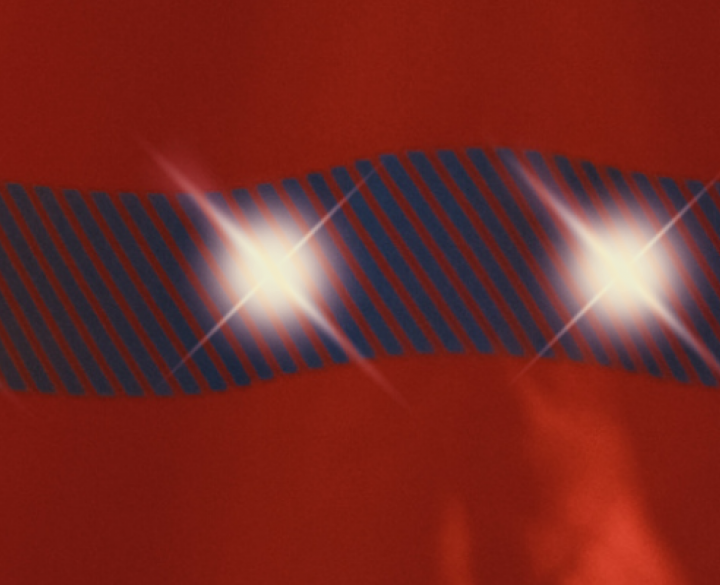High-visibility clothing must be worn when working in low or poor visibility conditions, particularly when working on pavements and roads. They allow you to contrast with your surroundings over a long distance. By day, they help to attract attention. At night, they help in the recognition of people. They are particularly important in high-speed traffic. High visibility clothing used as Personal Protective Equipment must meet the EN ISO 20471:2013 standard. They exist in the form of jackets, trousers, etc. These garments have a high visibility function through the use of fluorescent materials to increase daytime visibility and retroreflective materials to increase night-time visibility.
However, a technological evolution of high visibility clothing is taking place in the coming years.
The technological progress made by LEDs in recent years means that this type of device can be integrated into clothing. This type of active light has the advantages of being compact, intense and low energy consuming and thanks to these qualities it will also invade the protective clothing sector.
High visibility clothing will therefore not only be equipped with reflective strips but also with active light devices. High-visibility clothing with active light points has a clear advantage: the clothing is autonomously visible and can therefore be seen even in the absence of any other surrounding light source such as car headlights. Their visibility is also increased in adverse weather conditions such as rain, snow or fog.
The existing standard EN ISO 20471 does not take this technical development into account. There is a need to develop a standard assessment method that will enable companies to use the new technologies. This new standard to be put in place will remove the "presumption of conformity" bias and show that this new type of clothing is compliant with European legislation (Regulation 2016/425/EC on personal protective equipment).
It is therefore important to have
- a standard method for assessing the optical characteristics and proving the high visibility performance of the textile product even in the absence of ambient light or in climatic conditions that reduce visibility
- a measurement method to verify the active high visibility functionality under external mechanical stresses such as folding, washing, abrasion etc.
- The aim of the new method is to objectively measure the visibility performance and functional reliability of the garment so that it can fulfil its protective role.
The development of the new method will
- enable manufacturers to place products on the market that meet the minimum requirements of the European directive
- enable users, both consumers and workers, to be confident that they are optimally protected,
- support and facilitate the development of 'active light' textiles in our companies
- enable service companies to carry out appropriate maintenance for this type of clothing
The new method will fill the gap in standardisation that exists in relation to active light high visibility protective clothing.
The method will allow the garment to be assessed against the requirements of
- High visibility such as colour, intensity, angle of vision in dark conditions and difficult climatic conditions (rain, fog, haze, etc.)
- Use of clothing under mechanical stress at work and in private life such as resistance to washing, temperature variations, abrasion, folding or bending
The method will allow to view and measure on the entire periphery, i.e. 360° around the garment and under determined conditions and can be applied to any type of active light garment. A prototype test bench will be developed to prove the concept.





